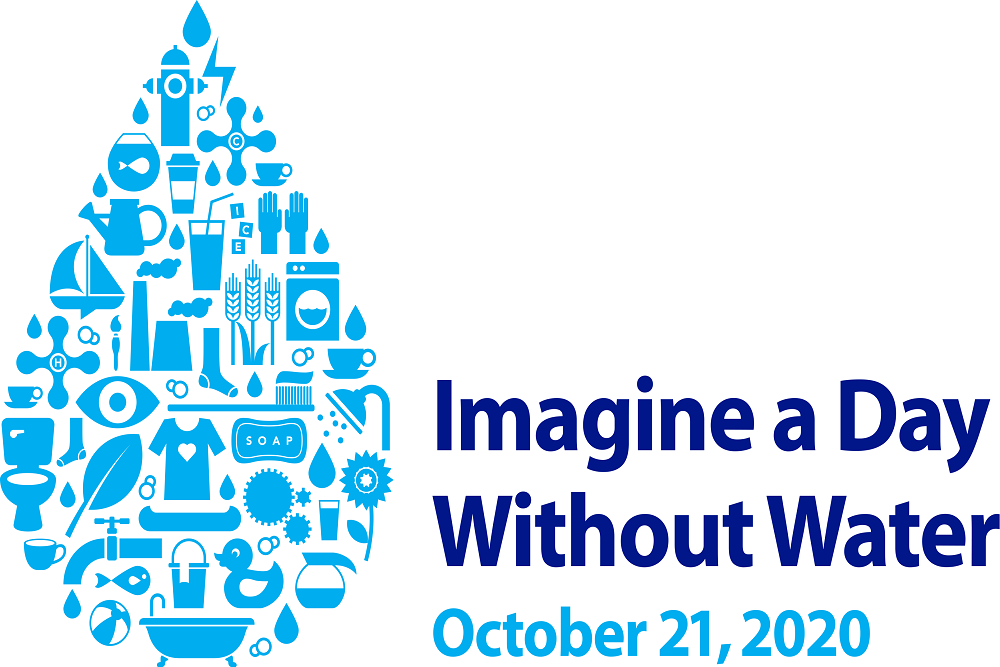City of Arlington recently issued the following announcement.
Imagine a Day without Water
Could you go a day without water? No water to drink or make coffee? No water to shower, brush your teeth, flush the toilet, or do laundry? No water for firefighters to put out fires. No water for farmers to water their crops.
We know that water is essential. That’s why we want you to know about a nationwide educational effort called “Imagine a Day Without Water.” On October 21, the Value of Water Coalition is coordinating a national advocacy and educational event, Imagine a Day Without Water, to raise awareness about the most essential natural resource we have: Water. Across the country, water agencies, mayors, engineers, contractors, business leaders, community members, schools, organizations, corporations, environmental advocates, and more are joining together to educate people about how water is essential, the challenges facing water and wastewater systems, and the need for investment.
Even though water is absolutely vital to everything we do, it too often is forgotten. Out of sight, out of mind. Many people take water service for granted. Clean, safe, reliable, and affordable water comes out of the tap and flows down the drain without a second thought. But the massive infrastructure — much of it underground — which brings water to homes and businesses, takes it away, and treats it, is aging. A water main breaks somewhere in the U.S. every two minutes. Most pipes have an average life expectancy of 50 years, but in many major cities, water pipes are more than 100 years old. Communities cannot afford to go a day without water if those systems reach their breaking points.
Water is essential.
- Water is essential for everything we do in life.
- We need water to make a cup of coffee, fight fires, build bridges, and swim on a summer day. We need water to grow strawberries, manufacture blue jeans, and make life-saving medicines.
- From agriculture to manufacturing, most sectors of our economy rely on water. Without water, our economy would grind to a halt.
- While nature provides water, it takes pipes, pumps, equipment, and people working 24/7 to deliver clean water to homes and businesses, and then remove and treat wastewater so it can safely be reused or returned to the environment.
- Water infrastructure is largely invisible. Because it’s out of sight, it’s out of mind for most people.
- After working around the clock for 100 years or more, water and wastewater infrastructure is aging and failing.
- These systems were built in the early 20th century for communities that looked completely different than today.
- We also face serious water resource challenges including: epic drought in the Western states, water and sewer breaks in East Coast and Midwestern communities, and rising sea levels, all of which contribute to flooding and additional stress on water systems.
- With a growing national population and finite water supplies, we have long-term water supply challenges that must be addressed with new and creative strategies that meet current and future needs.
1) Invest Locally
- We need water and wastewater bills that better reflect what it costs to deliver these essential services and to invest in the infrastructure so it’s in a state of good repair.
- Water and wastewater services are incredibly affordable compared to other utilities. The truth is this: if your cable goes out, it’s a nuisance, but if your water goes out, it is a crisis.
- When the federal government sets infrastructure policy or makes infrastructure investments, water must be front and center.
- We need a stronger federal partner that expands access to low-cost capital for all water providers and encourages collaboration between the public and private sectors.
- While conservation is critical, we also need innovative water management strategies to respond to the unprecedented water challenges facing communities all across the country. Investments can support a wide range of innovations including resource recovery, reuse, and diversification of local water supplies.
- Water projects can be expensive and no one sector alone can meet the need for investment. Public-private partnerships are essential to meet our financing and water management needs.
Water providers are economic anchors, frontline environmental stewards, good community partners and innovators.
We chart a prosperous and sustainable future if we invest in water infrastructure and water resources.
Water drives economic growth and competitiveness. Water protects public health, Water revitalizes neighborhoods and supports community vitality. Water sustains our environment and makes us more resilient in the face of climate change.
Water is life.To learn more, visit us at: www.thevalueofwater.org /thevalueofwater @TheValueofWater
"Investing in our water is investing in a future where no American will have to imagine a day without water."
More information about Imagine a Day Without Water can be found here:
http://imagineadaywithoutwater.org/
Original source: https://arlingtonia.municipalimpact.com/articles

 Alerts Sign-up
Alerts Sign-up